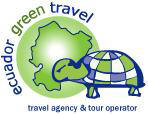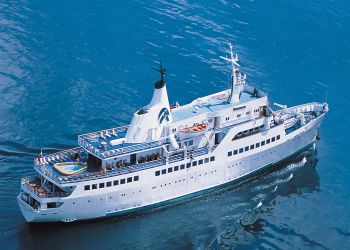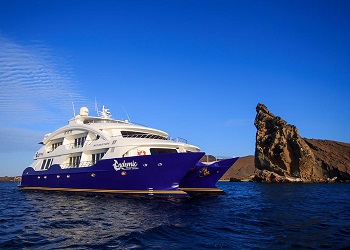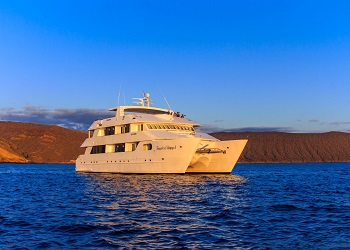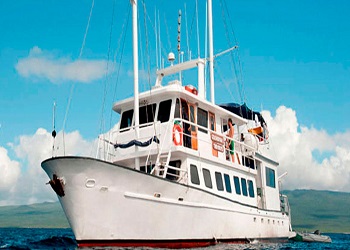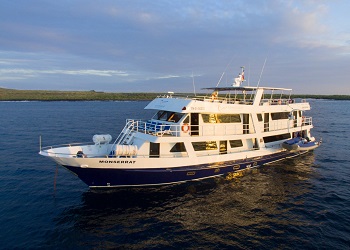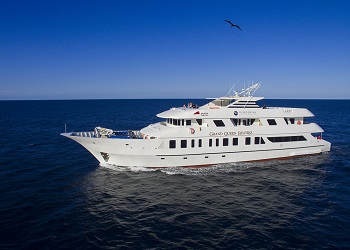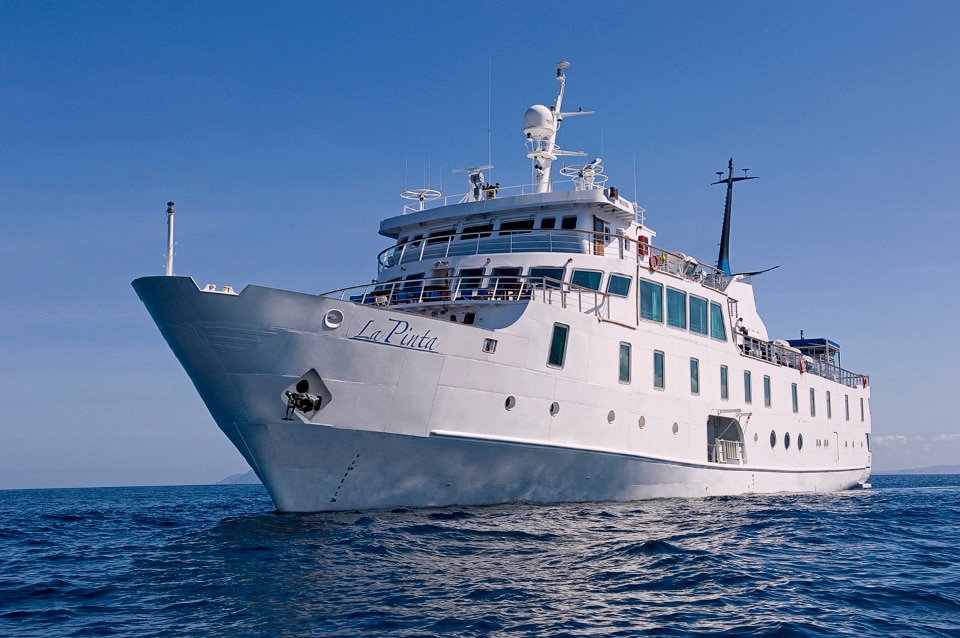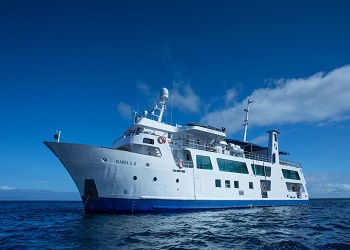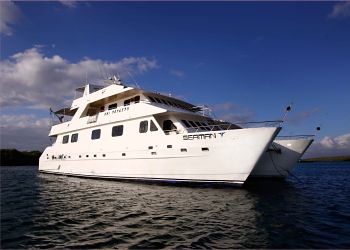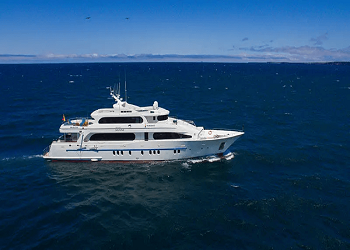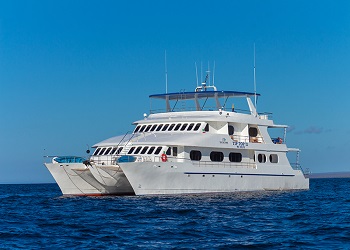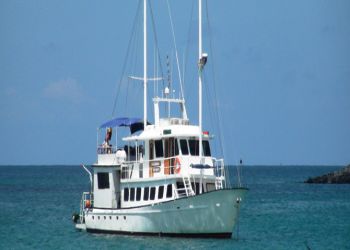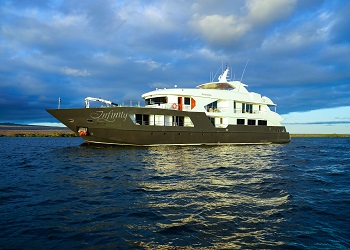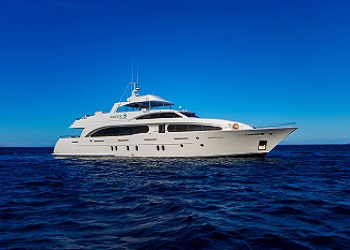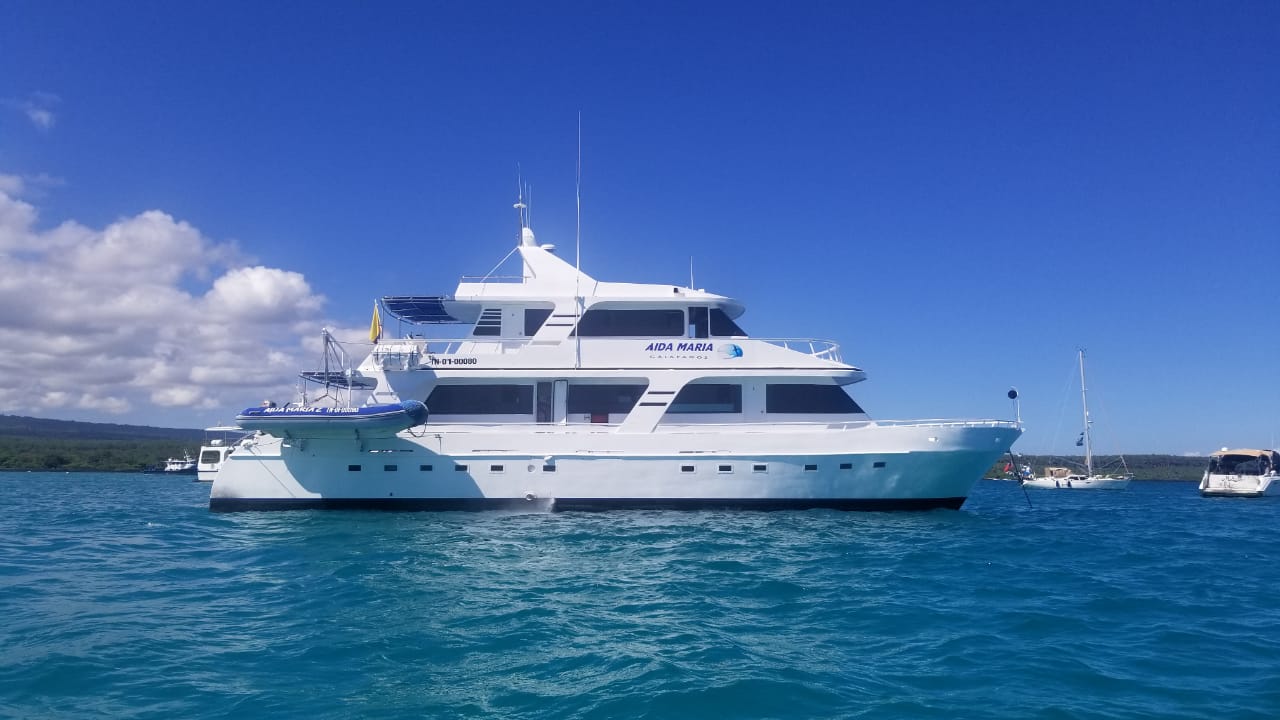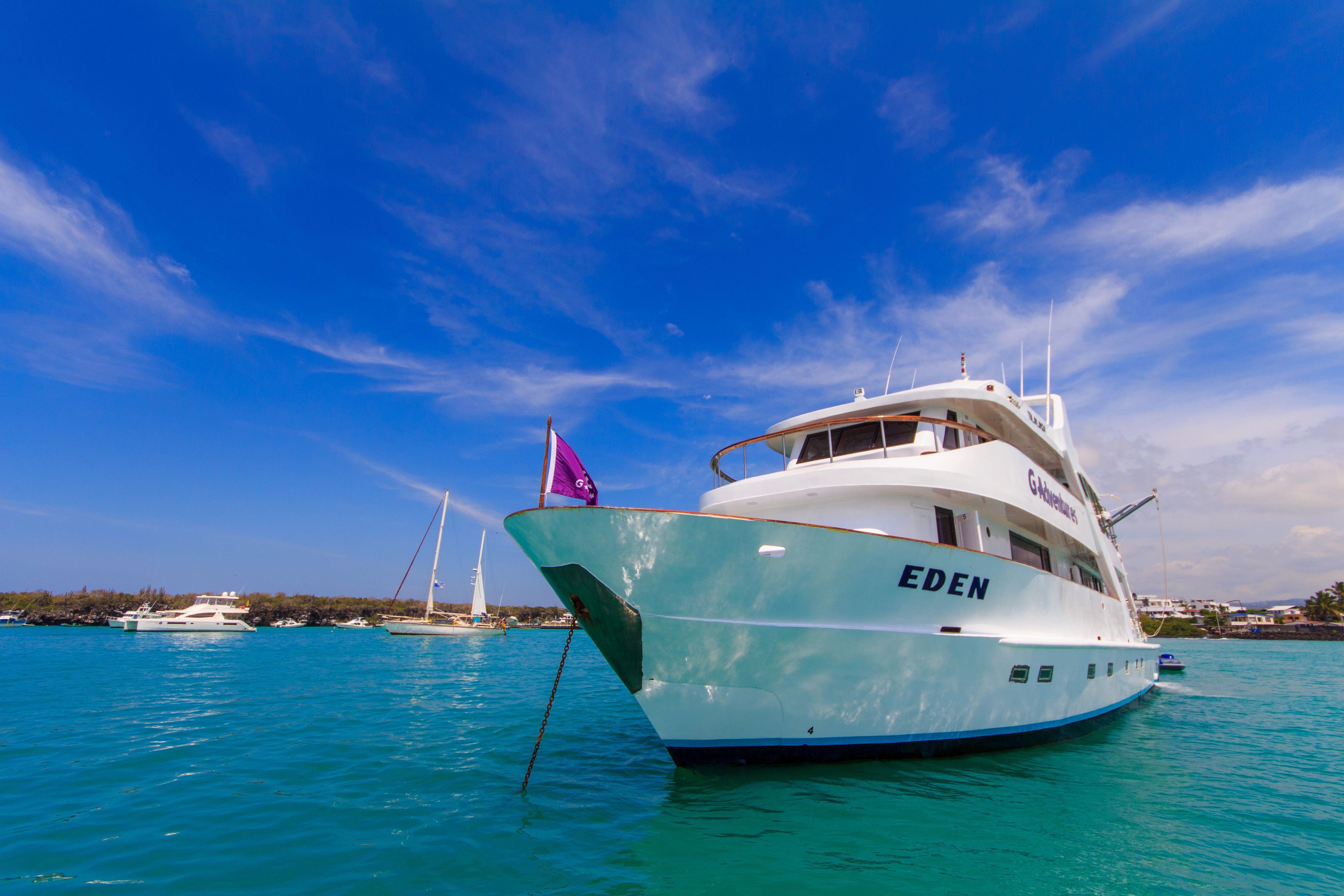Imprimir
DAY 1: WEDNESDAY
ARRIVE AT BALTRA AIRPORT / SANTA CRUZ ISLAND
Santa Cruz Island
Highlands of Santa Cruz: Galapagos giant tortoises can be seen in the wild in the highlands of Santa Cruz
Charles Darwin Station: Visit the Charles Darwin Station is a research facility and National Park Information center. The Charles Darwin Station has a giant tortoise and land iguana breeding program and interpretation center.

DAY 2: THURSDAY
SOUTH PLAZA ISLAND / SANTA FÉ (BARRINGTON) ISLAND
South Plaza Island: Plazas consists of two very small islands that were uplifted from the sea, separated by a channel. Only South Plazas has a visitor site. The highlights include tall Opuntia cactus, land and marine iguanas, rocky cliff that looks out towards open ocean which is also a nesting site for red-billed tropic birds and gulls, and a seal lion bachelor colony.
Santa Fe Island: Santa Fe is a smaller island of 24 km2. The visitor site Santa Fe is located on the northeast end of the island. Highlights include Santa Fe land iguanas, pelican nesting site, sea lion colony, mockingbird, and Palo Santo trees.
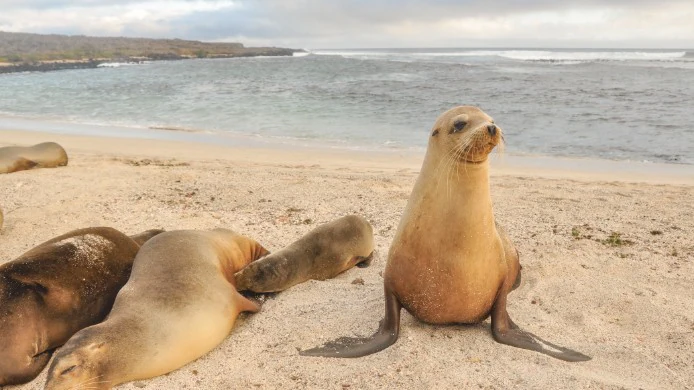
DAY 3 : FRIDAY
SAN CRISTÓBAL ISLAND
San Cristóbal Island (Chatham): San Cristóbal is the easternmost island of Galapagos and also one of the oldest.
Witch Hill: Witch Hill (Cerro Brujo) is a volcanic cone that looks over a beautiful white sandy beach which has plenty of sea lions, pelicans, blue-footed boobies, waders and marine iguanas.
Galapaguera & El Junco: The lagoon is the only fresh water reservoir in Galapagos and has great views from its altitude of 700m in the highlands of San Cristóbal. Rainwater has collected in the caldera for hundreds of years and formed this lagoon.
Galapaguera is a good area to see tortoises in their natural environment.

DAY 4 : SATURDAY
ESPAÑOLA (HOOD) ISLAND
Hood Island (Española): Hood is the oldest of the Southern Islands and is the southernmost in the archipelago. Because of its remote location a unique range of endemic species evolved here
Gardner Bay: Located on the northeast of the island, the site has a long and beautiful white sand beach inhabited by sea lion colonies.
Islote Garnder and Islote Osborn: These islets are snorkeling sites where visitors will see an abundance of tropical fish, reef sharks, and turtles.
Punta Suarez: The wildlife at Punta Suarez is plentiful and varied. Along the cliff visitors can enjoy the blowhole where seawater is forced about 20m into the air. The highlights are the Waved albatross (April-Dec) that are only found on Hood, Galapagos Hawks, blue-footed boobies, Ñasca boobies, and Española lava lizards.
DAY 5 : SUNDAY
FLOREANA ISLAND
Floreana Island: Floreana is best known for its colorful history of buccaneers, whalers, convicts, and early colonists.
Punta Cormorant: Punta Cormorant has two contrasting beaches and a large inland lagoon where pink flamingoes can be seen.
Devil’s Crown: This is a snorkeling site located just off Punta Cormorant. The site is a completely submerged volcano that has eroded to create the appearance of a jagged crown.
Post Office Bay: This is one of the few sites visited for its human history. Visit the wooden mail barrel where letters are dropped off and picked up and remains of the Norwegian fishing village.

DAY 6 : MONDAY
SANTA CRUZ ISLAND (INDEFATIGABLE) / JAMES (SANTIAGO) ISLAND
Santa Cruz Island (Indefatigable): Dragon Hill is located in the northwestern side of Santa Cruz Island. Some highlights include small lagoons with flamingos, Palo Santo trees, and Opuntia cactus.
James Island (Santiago): James Island is located between Isabela and Santa Cruz Islands. This Island offers a wide variety of seabirds, marine iguanas and fur seals.
Sullivan Bay: This site is of great geological interest. Highlights: 100 hundred year old lava flow field, pahoehoe formations, and lava bubbles.

DAY 7 : TUESDAY
TOWER (GENOVESA) ISLAND
Tower Island (Genovesa): Tower is an eroded flat volcanic island, with a natural harbor, which is actually the submerged caldera of this volcanic island.
Darwin Bay: The steep cliffs of this area dominate the island. This area is home to thousands of frigate birds, red-footed boobies, Noddy terns, lava gulls, tropicbirds, doves, storm petrels and Darwin’s finches.
El Barranco: There is a good possibility of seeing the unique “Short eared owl” at this site. During the dinghy rides along the cliffs fur seals and several species of seabirds can be spotted.

DAY 8 : WEDNESDAY
DAPHNE MAYOR ISLAND / BALTRA FOR RETURN FLIGHT TO QUITO
Daphne Mayor Island
Daphne Mayor is a small tuff cone island where many species of birds nest. Famous for a 20 year study of Darwin’s Finches conducted by Peter and Rosemary Grant. During the circumnavigation you will see blue-footed boobies, nasca boobies, red-billed tropicbirds and other sealife.
Baltra
Baltra: Return flight to Quito

